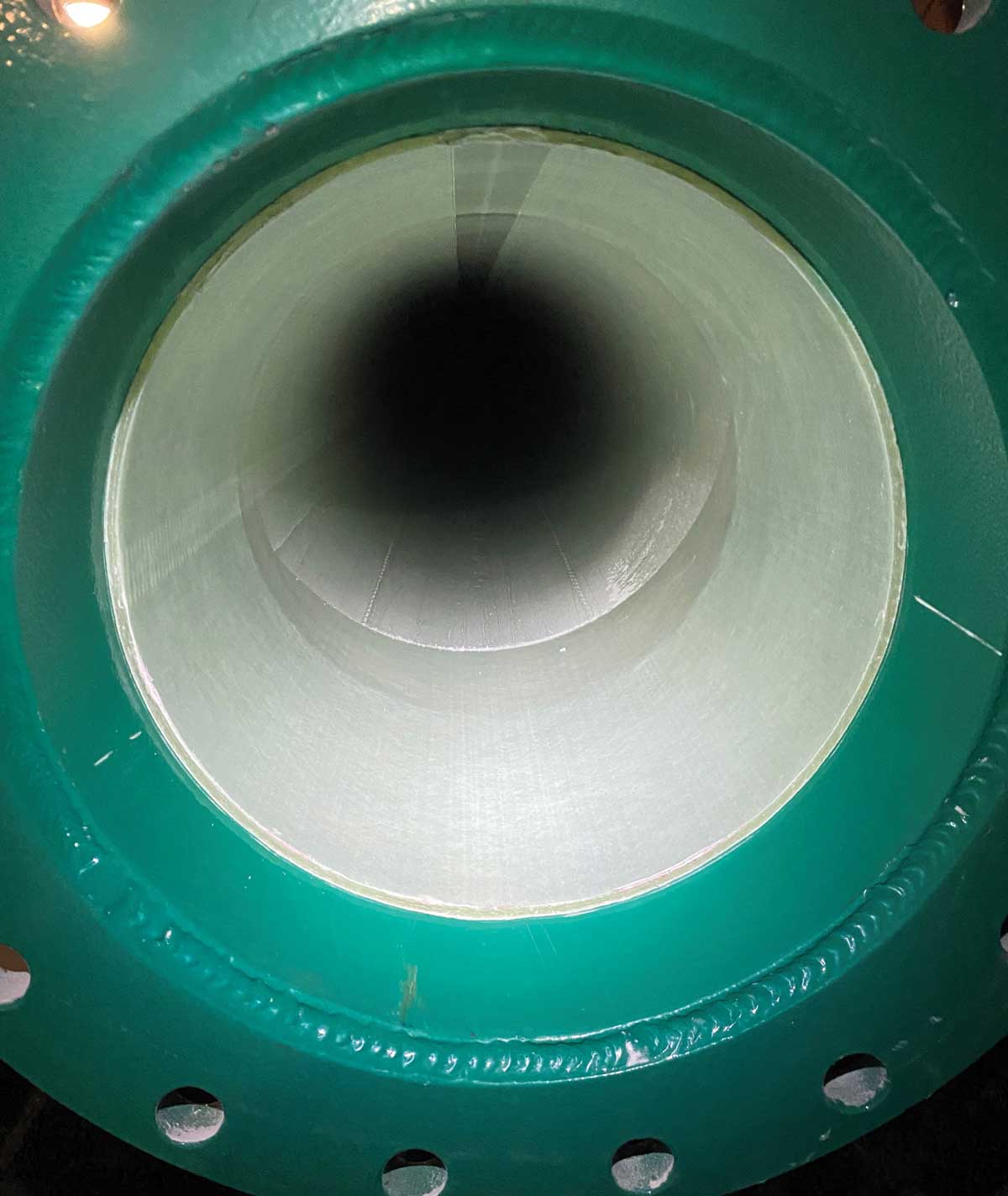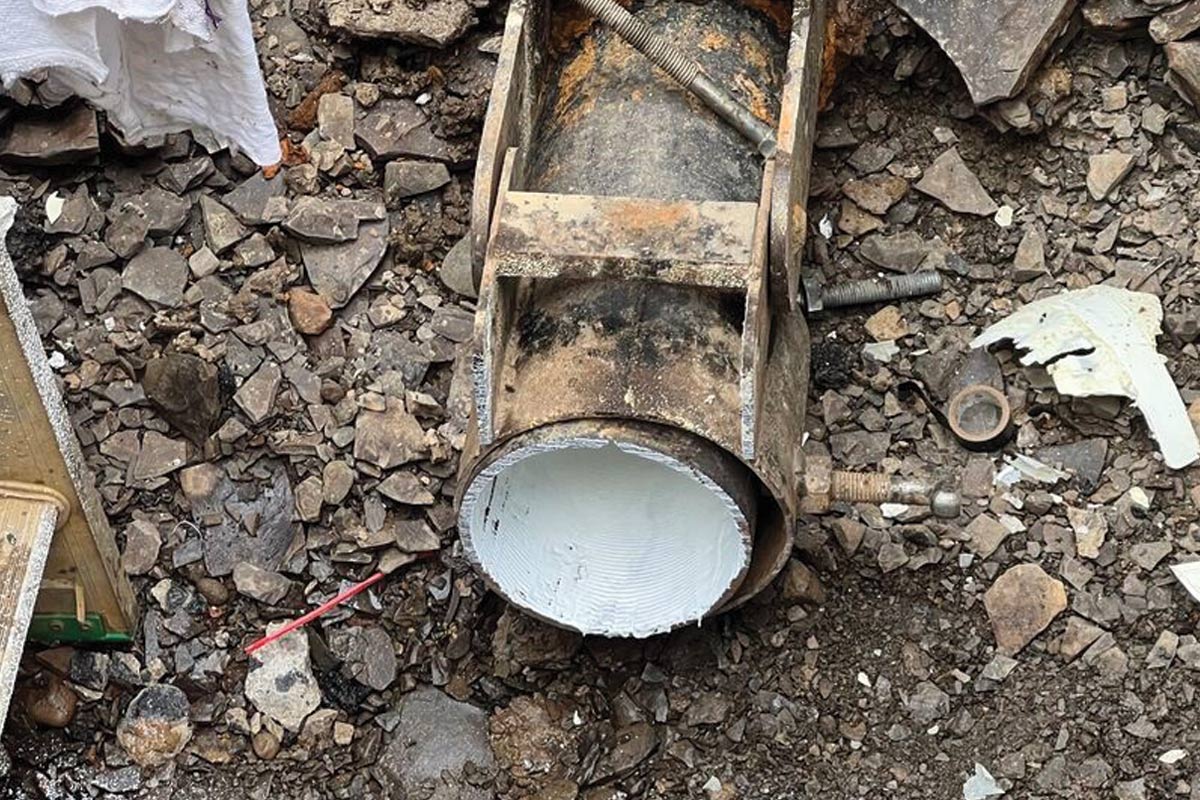
Watermains Rehabilitated in Montreal Using UV CIPP
A recently-completed project in Montreal marks the first use of ultraviolet cured-in-place pipe (UV CIPP) for watermain rehabilitation in Canada.
Saint Helen’s and Notre Dame islands in Montreal are well-noted recreational areas for Montreal residents, as well as the many visitors who come to the region. Given that it is a tourist destination location, any form of construction on or around the island is a thoroughly thought-out process.
When the two watermains providing potable water and fire protection to the two islands started showing signs of deterioration, the City of Montreal began looking at potential repair options. It knew going into the process that whatever the method selected, it needed to be minimally invasive to the activities going on aboveground.
As these are islands in the St. Lawrence River, the watermains connect to St. Helen’s Island via the Concorde Bridge. More precisely the twin watermains are inside steel caissons that extend the length of the bridge.
“The installation of insulated and heated drinking water pipes in the steel caissons of the Concorde Bridge is atypical,” says Marie-Pier Simard, ing., project manager construction projects. “The pipes were installed as part of Expo67 in 1966 and are part of the City of Montreal’s main drinking water system. The existing drinking water pipes are made of steel and concrete lining with welded joints.”

The pipes have an internal diameter of 425-mm and each span approximately 700 m across the river. Given that the pipes are over 50 years old and have been subjected to harsh conditions including the cold Montreal winters, breaks began to occur on the pipes. Spot repairs were made, but it was clear that a permanent fix was needed before a catastrophic failure occurred on either line.
The city evaluated several options for the rehabilitation of the pipes. The structural repair needed to meet the fire protection needs of the sector, work within the constraints of the steel pipe and be able to be installed with limited access. And because these are potable water pipes, the rehab materials must meet Bureau de normalization du Québec (BNQ) certification. BNQ is a standardization organization for Quebec, and the products used on this project had to meet BNQ3660-950, “Safety of Products and Materials in Contact with Drinking Water.”

Selecting UV CIPP
Though not specifically tendered as an ultraviolet-cured project, Lévis, Québec-based Lafontaine Inc., inquired if the work could be completed using the UV CIPP method. The contractor won the project marking its first UV CIPP install for a watermain.
“We’ve done UV lining since 2015 and with our experience, we thought that this project would be easier with UV lining rather than felt lining because of the location of the pipes, length and diameter,” says Mathieu Asselin, ing., co-director, construction department, at Lafontaine. “The City of Montréal frequently uses trenchless technologies for sewer rehab, but it was the first time Montreal has used UV CIPP for a watermain.”
Both Asselin and Simard note that, not only was this installation a first for Montreal, but this is the first documented use of UV CIPP for a watermain in Canada.

Preparing for the Install
Before this challenging installation could get under way, Lafontaine had to make sure its crews were properly equipped to complete the project. This required close coordination with Saertex in Germany – where Saertex’s liners for pressure applications are manufactured.
According to Asselin, that included several meetings with Saertex through the planning process, sending Lafontaine technicians to Germany for training and having a Saertex technician onsite for the work.
This pre-project work also included getting the process BNQ certified. “We are now proudly the first company in Canada to be BNQ certified for UV CIPP lining in potable watermains,” says Asselin.
For the project, Lafontaine handled digging the trenches on both ends of the bridge to tie-in the lined portion to the existing off-bridge infrastructure. Their work also included the installation of a bypass system for both lines over the bridge. Subcontractors were used for the pre-installation cleaning, as well as additional electrical work inside of the bridge.
Because these are the only watermains feeding potable water to the islands, Lafontaine had to build a bypass system to handle the constant flow of water. The bypass ran along the topside of the bridge and required special end connections on either side that would accommodate for any of the natural expansion and contraction of the bridge as temperatures fluctuated.
“The bypass was two, 700-m lines of 12-in. diameter pipe and it was almost a project within this project because it was a big job,” says Asselin. “All of the bypass at the beginning was disinfected and the water was tested each week to make sure the quality levels of the water were maintained during the project.”

UV CIPP’s Advantages
One of the benefits of using the UV-cured liner vs. traditional felt is that the footprint of the installation is smaller. This was key considering the only access to the watermains were at either end of the bridge or through 700 mm diameter access points on the bridge. Those access points to the steel caissons were spaced every 25 m in the steel walls.
“The advantage of this method is that the sheath arrives at the site already imbued with the resin,” says Simard. “This considerably reduces the space required for the insertion of the sheath as opposed to other methods that require a larger working area to imbue the sheath in situ.”
While the UV CIPP process made installing the liner easier, it was not without its challenges. Because of the size and location of the access points on the bridge, Lafontaine’s crews could not carry the liner onto the bridge. As part of the bid process, the City required prospective bidders to physically visit the site and the inside of the steel caissons.

After looking at the site conditions, Lafontaine determined that the liner section needed to be pulled into the bridge using a temporary piping system they built. This system ensured that the liner would not tear as it made its way into the bridge.
In terms of their tools and curing light trains, those had to be carried onto the bridge and lowered into the access points for each section of the project. Asselin notes that, given the circumstances, the installation of the liners went smoothly with no issues.
Lafontaine completed the installation in four sections – eight total segments of liner – in October 2022. All told the pre-installation work, bypassing, post-installation disinfection and return to service was completed from June to December. There are some restoration works that will be completed this spring.
“This project was a success for us, a success for the city and we are waiting for a new challenge like this one,” says Asselin. “It was a big job for our crew, and we can be really proud of the effort they put forth.”
Mike Kezdi is the managing editor of Trenchless Technology Canada.




